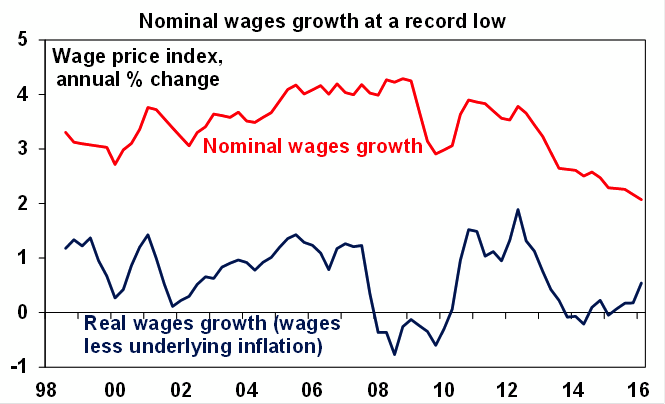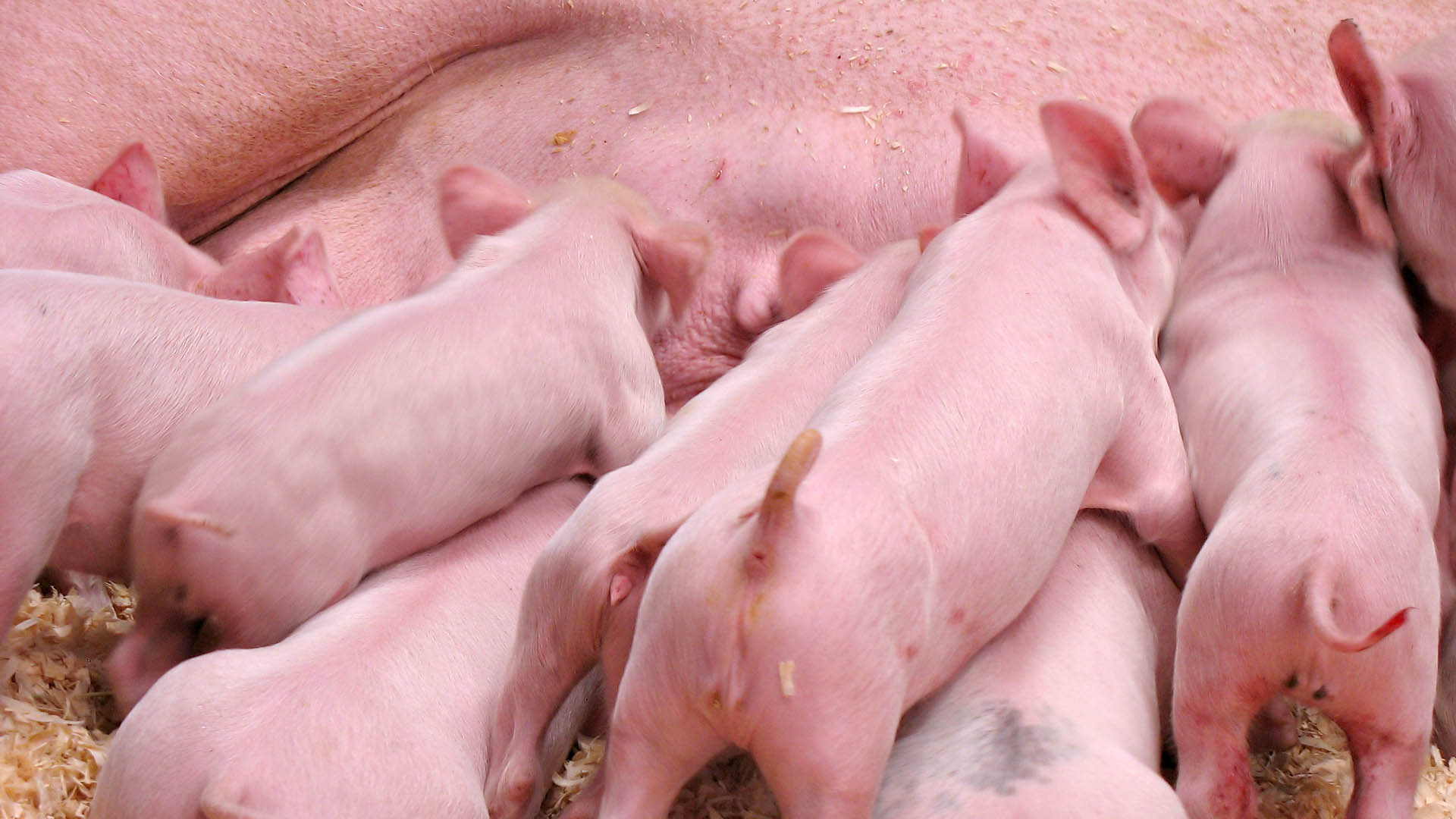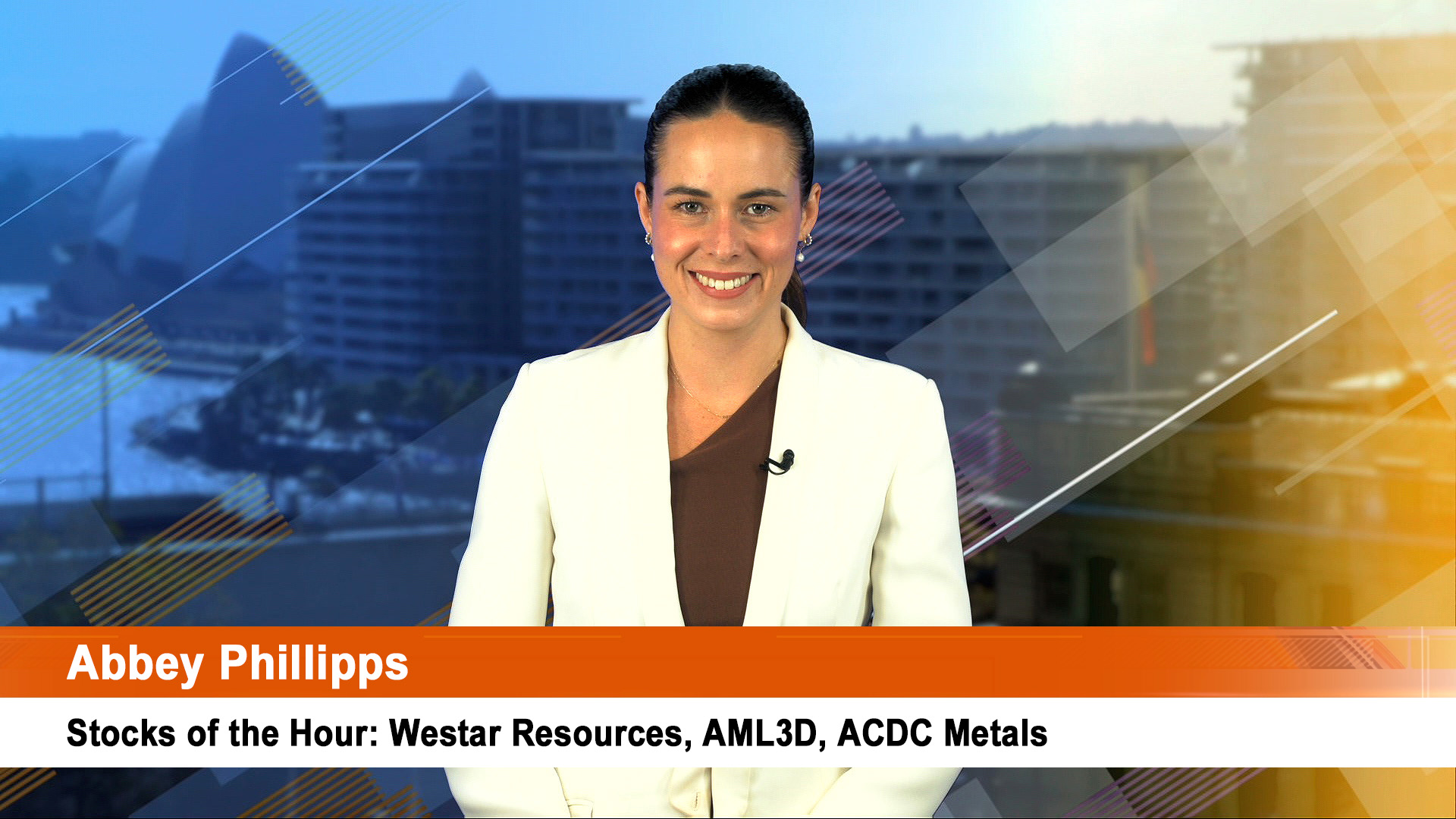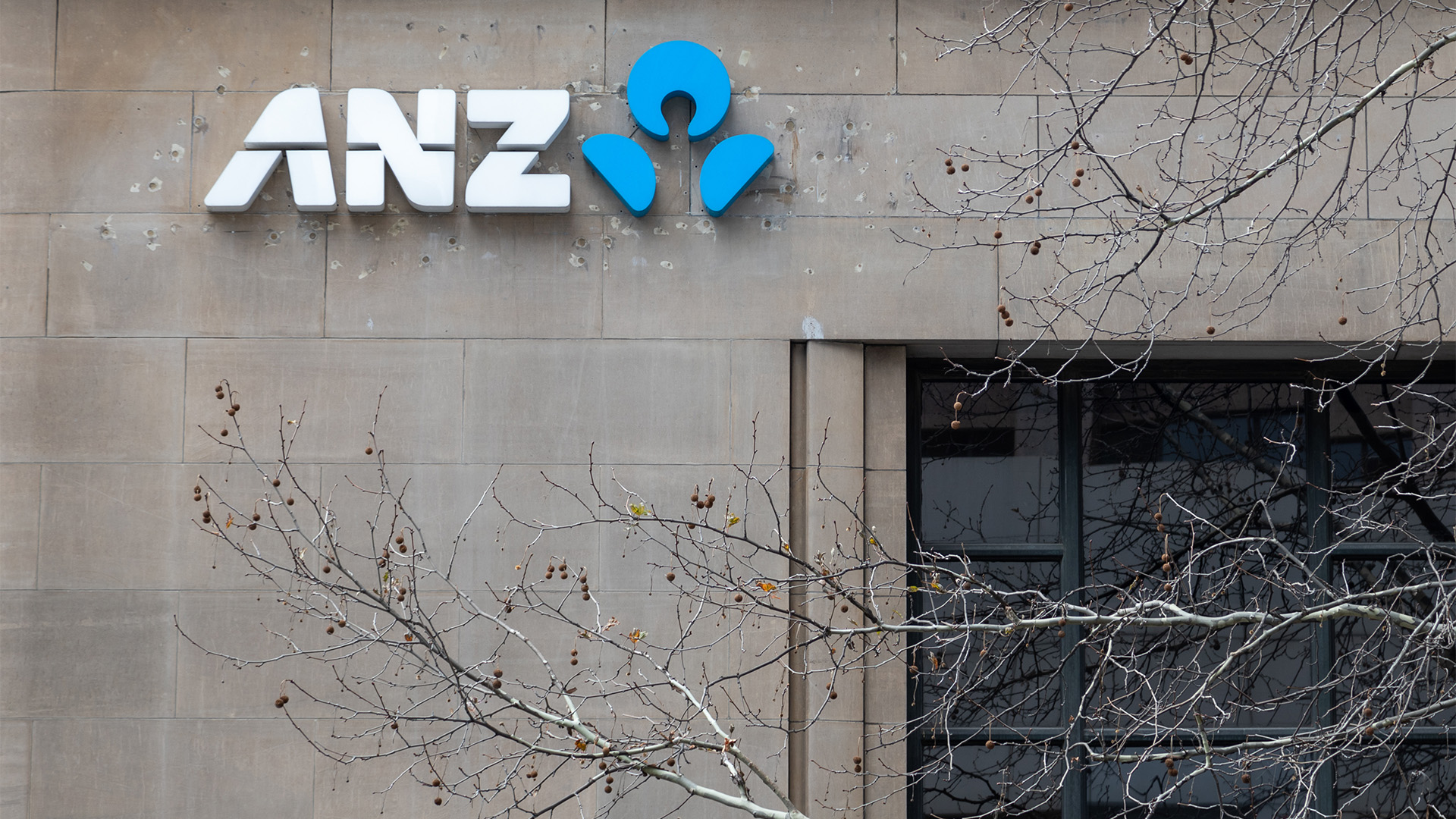Even though March quarter wages growth in Australia fell to yet another record low, there was actually a rise in real wages for the second quarter in a row, thanks to falling inflation.
Bureau of Statistics figures released yesterday showed growth of just 0.4% quarter on quarter or 2.1% year on year. This was less than expected and took annual wages growth for the wage price index to a new recorded low.
Private sector wages growth was just 1.9% year on year in the quarter, while public sector wages grew at a much faster rate of 2.5%.
The March quarter consumer price index showed a surprise 0.2% dip in headline inflation in the quarter, which dragged the annual rate to just 1.3%. The core reading favoured by the Reserve Bank showed an annual rate of 1.55% for the quarter, well under its 2% to 3% target range.
It is the second quarter in a row that inflation has fallen fast enough to overtake weaker wage to produce real wage growth for private and public employees. In the three months to December, the wage price index rose 0.4% and 2.2% for the year, while headline CPI was up 0.4% and 1.7% (and the RBA’s preferred measures rose by just over 2%).
The two successive quarters of real wage growth is a big change from last year when wages slowed and workers suffered as wages fell behind price growth in the economy.

Source: ABS, AMP Capital
The AMP’s chief economist Dr Shane Oliver says that while wages are rising faster than inflation, which is an improvement on a year ago, “real wages growth is still weak at just over 0.5% year on year and so will only provide modest support for consumer spending”.
“The continuing deceleration in wages growth means ongoing downwards pressure on inflation as it means a further fall in cost pressures for businesses.
"As such the latest reading on wages growth reinforces the RBA’s decision to cut interest rates this month and is consistent with more rate cuts ahead if the RBA is to be successful in achieving its own forecasts for inflation to head back up to around 2% by mid-2017.
“While the minutes from the RBA’s last Board meeting were initially interpreted as suggesting that the RBA would not be rushing to cut rates again as it awaits “further information”, today’s further information showing even lower than expected wages growth suggest that another rate cut as early as June or July is possible, even though August remains our base case for the next cut,” Dr Oliver wrote yesterday.













